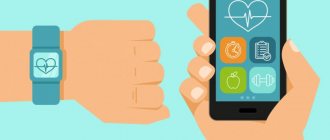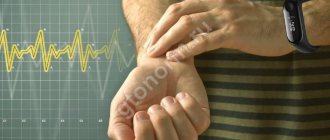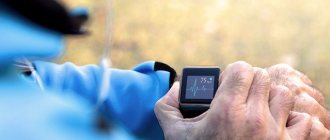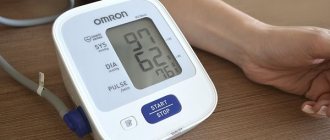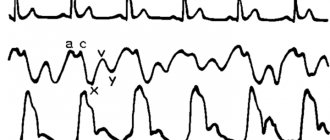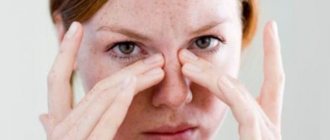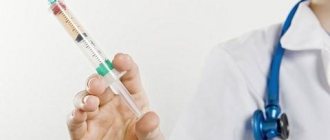Breathing is the most important function of the body, the violation of which can lead to human death. Newborns are especially susceptible to this danger, since the infant's respiratory system is not perfect and is just going through the stages of final formation. It’s not surprising why parents often listen to their child’s breathing. It is important to understand that this process occurs differently in children than in adults.
Baby's breathing is the most important vital sign
Features of the respiratory system in a child
During the period of intrauterine development of the fetus, the formation and development of vital organs occurs. Their formation is completed after birth. The respiratory system begins to function at full capacity only in adulthood.
Distinctive features of the respiratory system in children:
- At birth, the baby takes its first breath and the lungs open. Their volume is much smaller than the size of the chest. But it contains a sufficient number of blood vessels. To saturate their organs with oxygen, children make breathing movements more often than adults ;
- The large number of breathing movements of children is also due to the fact that the bulk of oxygen enters through the nasal passages. In children, they are narrow and short and contain a large number of lymphatic and blood vessels. At the slightest irritation (dust, infection or allergens), swelling of the mucous membrane occurs, which further complicates the passage of air into the lungs.
Children are not good at breathing through the mouth, so parents are advised to clean their nasal passages more often.
Breathing type
Defined as thoracic, abdominal and mixed:
- the chest type is characterized by movements of the chest;
- abdominal ─ movements of the diaphragm and abdominal wall,
- mixed ─ the chest and diaphragm work.
In the first case, the lower part of the lungs is insufficiently ventilated, in the second - the apex, as a result of which congestion syndrome is possible. The mixed type of respiratory movements, due to the expansion of the chest and movements of the abdominal wall, ventilates the lungs in all directions.
Methods for calculating the breathing rate of a child
The respiratory rate in children (the norm by age has significant differences) is checked by pediatricians during monthly examinations and compared with indicators for the child’s age. Parents can count the number of inhalations and exhalations themselves. When determining indicators, you need to take into account the child’s age, weight category, general health condition and time of day.
Sequence of performing the procedure at home:
- Determine the child's breathing type. Up to 4 years of age, children predominate in belly breathing, that is, when inhaling and exhaling, the peritoneum (abdomen) rises and falls. From 4 to 10 years, predominantly chest breathing is observed. The rise and fall of the chest is visually noted. After 10 years, abdominal breathing predominates in males, and chest breathing in females.
- After determining the type of breathing, you need to prepare a watch with a second hand and bring the child into a calm state. Playing games, watching cartoons, or being scared about the upcoming procedure will not allow you to obtain accurate data. In infants, it is recommended to take measurements during sleep. The indicator will be slightly lower than during the waking period.
- A comfortable position for correctly counting inhalations and exhalations is a lying position. Children from 1 to 5 years old can be calmed with a rattle or calm conversation. In this case, the participation of 2 parents will be required.
- The number of breathing movements can be assessed visually or by placing your hand on your stomach or ribs.
- The most accurate indicators are those measured in 1 minute. If the child is fidgety, then it is allowed to make calculations for 15 or 30 seconds. Multiply the resulting number by 4 or 2. But the data will have an error.
- To increase the measurement accuracy, the procedure must be performed 3-4 times. The resulting arithmetic mean will give the exact number that needs to be compared with the age norm.
At the same time, it is recommended to measure the number of heartbeats. If there is a deviation in the indicators, the child should be shown to a pediatrician. The specialist will re-measure the indicator, taking into account accompanying factors (excess weight, presence of a runny nose).
How to correctly measure respiratory rate?
To correctly assess the frequency of respiratory movements, measurements should be taken during rest. It is necessary to understand that physical activity and even simple walking around the room can affect this indicator.
For accurate measurements, you can observe the rise and fall of a person's chest. One breathing movement includes one inhalation (the chest rises) and a subsequent exhalation (the chest falls).
To measure the frequency of respiratory movements, you should count how many such rises and falls a person makes within 30 seconds, and then multiply the resulting figure by 2.
Purpose of research
Comparison of respiratory rate with standards is required to assess the development of the respiratory system and heart function. A change in indicators in any direction may indicate the presence of pathology (infectious and non-infectious in nature).
Timely identification of developmental deviations increases the likelihood of a child’s complete recovery, without the development of complications. If the measurements were taken over several days, then they need to be shown to the pediatrician. The data will allow you to make a diagnosis faster.
Norms of breathing rate in newborns
Newborns have the highest respiratory rates. Moreover, in premature babies, a reduced range may be important due to the irregularity of inhalations and exhalations. Deviations from the norm can only be determined by a pediatrician.
The permissible range of breathing rates in children under one year of age:
| Age parameter | Number of breathing movements in 1 minute | |
| Full-term babies | Premature | |
| From birth to 14 days | 40-60 | 20-80 |
| From 15 days to 3 months | 40-45 | 35-50 |
| From 3 to 6 months | 30-40 | 35-45 |
| Over 6 months and up to a year | 30-35 | 30-35 |
By the age of one year, the range of respiratory rates in full-term and premature infants narrows. In children born prematurely, breathing stops for 10-15 seconds, which is considered normal, if there is no blueness of the extremities and there is no developmental disorder of the child. If there are deviations, an urgent examination by a pediatrician is necessary.
Norms of respiratory rate in children by age during wakefulness
The respiratory rate in children (the norm by age presented in the table does not take into account the characteristics of the child’s condition) gradually decreases until the child reaches 18 years of age. Since the lungs are fully expanded (over the entire chest), the condition of the nasal passages changes and the child learns to breathe through the mouth.
Respiratory rate indicators for children from one to 18 years of age:
| Age Ranges | Minimum number of breaths per minute | Maximum number of breaths per minute |
| From 1 year to 2 years | 30 | 35 |
| From 2 to 3 years | 25 | 35 |
| From 3 to 4 years | 25 | 30 |
| From 4 to 5 years | 20 | 30 |
| From 5 to 7 years | 20 | 25 |
| From 7 to 10 years | 18 | 25 |
| From 10 to 14 years old | 18 | 20 |
| From 14 to 18 years old | 16 | 20 |
When measuring the frequency of inhalations and exhalations yourself, it is recommended to pay attention to the depth of inhalations.
If your breathing is shallow, then it will naturally become more frequent to replenish the oxygen deficiency. If a child breathes deeply, but often, this signals the development of pathology. An examination of the pulmonary and cardiovascular systems is necessary.
How often should babies breathe in their sleep?
Indicators of the rhythm and frequency of breathing during night sleep differ from the values at the time of wakefulness. Infants, during rest, may experience periodic breathing (discussed below) or apnea (stopping breathing for 10-15 seconds with a frequency of repetitions of at least 15 times within 1 hour).
At the moment of sleep, the whole body rests (muscles and nervous system relax, heart rate slows down), as a result, oxygen consumption decreases, as a result, the frequency and depth of inhalations and exhalations decreases. If you are in doubt whether the child is breathing or not, you can determine the presence of breaths by the rise and fall of the ribs or peritoneum.
It is not recommended to wake up the child every 5-10 minutes. This will harm his nervous system.
In the presence of apnea in premature infants, parents are advised to monitor the rhythm of breathing. Sometimes the baby cannot resume the breathing process during sleep due to muscle relaxation. It is recommended to wake the child, if there is no reaction, urgently call emergency help , and additionally take the necessary measures to restore the respiratory process.
As you grow older, the rhythm and frequency of breathing during sleep stabilizes. In rare cases, these deviations are observed in adults.
Normal blood pressure, pulse, respiratory rate.
Through arteries, blood flows from the heart to organs and tissues, while it is rich in oxygen and is called arterial. Blood flows through the veins to the heart, while it has already given oxygen to each cell of the body and taken carbon dioxide from the cells, therefore this blood is darker and is called venous.
Arterial pressure is the pressure that is formed in the arterial system of the body during contractions of the heart and depends on complex neurohumoral regulation, the magnitude and speed of cardiac output, the frequency and rhythm of heart contractions and vascular tone.
There are systolic (SD) and diastolic pressure (DD). Blood pressure is recorded in millimeters of mercury (mmHg). Systolic is the pressure that occurs in the arteries at the moment of maximum rise of the pulse wave after ventricular systole. Normally, in a healthy adult, DM is 100–140 mm Hg. Art.
The pressure maintained in the arterial vessels during ventricular diastole is called diastolic; normally in a healthy adult it is 60–90 mmHg. Art. Thus, human blood pressure consists of two values - systolic and diastolic. SD (larger indicator) is written first, DD (smaller indicator) is written second, separated by a fraction.
In the morning, blood pressure is lower by 5-10 mmHg than in the evening. Art.. A sharp drop in blood pressure is life-threatening! It is accompanied by pallor, severe weakness, and loss of consciousness. Low blood pressure disrupts the normal course of many vital processes. So, when systolic pressure drops below 50 mm Hg. Art. urine production ceases and renal failure develops.
Blood pressure is measured using the indirect sound method, proposed in 1905 by the Russian surgeon N.S. Korotkov. Devices for measuring pressure have the following names: Riva-Rocci apparatus, or tonometer, or sphygmomanometer.
Currently, electronic devices are also used that make it possible to determine blood pressure using a non-sound method.
To study blood pressure, it is important to consider the following factors: the size of the cuff, the condition of the membrane and tubes of the phonendoscope, which may be damaged.
The pulse is a rhythmic oscillation of the artery wall caused by the release of blood into the arterial system during one contraction of the heart. There are central (on the aorta, carotid arteries) and peripheral (on the radial, dorsal artery of the foot and some other arteries) pulse.
For diagnostic purposes, the pulse is determined in the temporal, femoral, brachial, popliteal, posterior tibial and other arteries.
More often, the pulse is examined in adults on the radial artery, which is located superficially between the styloid process of the radius and the tendon of the internal radial muscle.
When examining the pulse, it is important to determine its frequency, rhythm, filling, tension and other characteristics. The nature of the pulse also depends on the elasticity of the artery wall.
Frequency is the number of pulse waves per minute. Normally, a healthy adult has a pulse of 60-80 beats per minute. An increase in heart rate of more than 85-90 beats per minute is called tachycardia. A heart rate rate of less than 60 beats per minute is called bradycardia. The absence of a pulse is called asystole. With an increase in body temperature at HS, the pulse increases in adults by 8-10 beats per minute.
The pulse rhythm is determined by the intervals between pulse waves. If they are the same, the pulse is rhythmic (correct); if they are different, the pulse is arrhythmic (incorrect). In a healthy person, the contraction of the heart and the pulse wave follow each other at regular intervals.
Pulse filling is determined by the height of the pulse wave and depends on the systolic volume of the heart. If the height is normal or increased, then a normal pulse (full) is felt; if not, then the pulse is empty. Pulse voltage depends on blood pressure and is determined by the force that must be applied until the pulse disappears.
At normal pressure, the artery is compressed with moderate force, so the normal pulse is of moderate (satisfactory) tension. With high pressure, the artery is compressed by strong pressure - this pulse is called tense. It is important not to make a mistake, since the artery itself can be sclerotic. In this case, it is necessary to measure the pressure and verify the assumption that has arisen.
With low blood pressure, the artery is easily compressed, and the tension of the pulse is called soft (relaxed).
An empty, relaxed pulse is called a small filamentous pulse.
Pulse study data is recorded in two ways: digitally - in medical documentation, journals, and graphically - in the temperature sheet with a red pencil in the column “P” (pulse). It is important to determine the division value on the temperature sheet.
The respiratory system provides the gas exchange necessary to maintain life and also functions as a vocal apparatus. The function of the respiratory system is simply to supply the blood with sufficient oxygen and remove carbon dioxide from it. Life without oxygen is not possible for humans. The exchange of oxygen and carbon dioxide between the body and the environment is called respiration.
1. External respiration - gas exchange between the external environment and the blood of the pulmonary capillaries.
2. Transfer of gases (using blood hemoglobin).
3. Internal tissue respiration - gas exchange between blood and cells, as a result of which the cells consume oxygen and release carbon dioxide. When observing breathing, special attention should be paid to changes in skin color, determining the frequency, rhythm, depth of respiratory movements and assessing the type of breathing.
The respiratory movement is carried out by alternating inhalation and exhalation. The number of breaths in 1 minute is called the respiratory rate (RR).
In a healthy adult, the rate of respiratory movements at rest is 16-20 per minute; in women it is 2-4 breaths more than in men. NPV depends not only on gender, but also on body position, state of the nervous system, age, body temperature, etc.
Observation of breathing should be carried out unnoticed by the patient, since he can arbitrarily change the frequency, rhythm, and depth of breathing. NPV is related to heart rate on average as 1:4. When body temperature increases by 1°C, breathing becomes more frequent by an average of 4 respiratory movements.
There is a distinction between shallow and deep breathing. Shallow breathing may not be audible from a distance. Deep breathing, audible from a distance, is most often associated with a pathological decrease in breathing.
Physiological types of breathing include thoracic, abdominal and mixed type. In women, thoracic breathing is more common; in men, abdominal breathing is more common. With a mixed type of breathing, a uniform expansion of the chest of all parts of the lung occurs in all directions. Types of breathing are developed depending on the influence of both the external and internal environment of the body.
Causes of decreased breathing rate
Factors that reduce the frequency of inhalation and exhalation can be natural or pathological:
| Natural processes | Pathological processes |
| Frequent attacks of apnea. | Injuries in the chest area. Perhaps damage to the lung tissue, or due to a bruise, the breathing process may be accompanied by severe pain, which will interfere with the normal breathing rhythm. |
| Strong relaxation of the respiratory muscles during sleep. | Damage to brain cells responsible for the respiratory reflex. |
| Physiological feature of the body (rare breathing rate). | The presence of a foreign object in the respiratory tract. |
| Formation of the pulmonary system as the child grows up. | Damage or inflammation of the nerve cells that regulate the frequency of inhalation and exhalation. |
| Temperature drop | Violation of the condition or functioning of the bronchi. |
| Side effects from taking medications. | |
| Electric shock may slow down your breathing. | |
| Poor blood supply, swelling or tumor formations in the brain affecting the functioning of the respiratory system. | |
| Spinal injury. There may be a disruption of the nerve cells that regulate the performance of the muscle tissue responsible for respiratory contractions. | |
| Severe poisoning of the body with poisons. There is a malfunction in the functioning of all organs and systems. | |
| Atrophy of muscle tissue as a result of paralysis or prolonged muscle inactivity. | |
| Curvature of the spine or rickets with subsequent deformation of the chest. | |
| Pathological processes in the cardiovascular system. |
Video on what to do if a child is holding his breath:
Whether a violation of the breathing process is a pathology or a natural process can be determined through regular monitoring of the child and a full examination by a pediatrician and pulmonologist.
Causes of decreased respiratory rate
Factors that cause a low breathing rate include the following.
- Drug overdose. Overdosing on certain medications, such as narcotics, can depress the breathing drivers in the brain and lead to a low respiratory rate.
- Obstructive sleep apnea. Sleep apnea is characterized by a blocked airway that often develops when the muscles in the soft tissues of the throat relax. This blockage causes short pauses in breathing and can reduce the overall respiratory rate.
- Head injuries. Head injuries can affect the part of the brain involved in breathing. This may cause you to breathe less frequently.
What does rapid breathing in children mean?
The frequency of inhalation and exhalation may deviate upward from age-related norms, also due to the influence of natural and pathological factors. This pathology occurs more often in children, since they cannot yet regulate the breathing process normally.
| Natural processes | Pathological processes |
| The air is too dry, hot, rarefied (found in the mountains). | Having a runny nose. Congestion and swelling of the nasal passages occurs. As a result, the child is forced to perform frequent breathing processes through the mouth. |
| Exercising and brisk walking. | Bronchial diseases. As a result, oxygen supply to tissues deteriorates. The brain sends signals to increase the breathing rate. |
| Excitement, fear or crying in a child. | Increased body temperature due to infection. |
| Clogged nasal passages with crusts of waste mucus. | Impaired functioning of brain cells due to injury, the presence of a tumor, or impaired blood supply. |
| Heavy weight of the child. For the normal functioning of all organs, more oxygen is required. | Tumor formations (of any nature) in the respiratory system. |
| Individual features of the functioning of the pulmonary system. | Chest injury. The pain prevents you from taking deep breaths, as a result the child switches to frequent, shallow breathing. |
| Overheating of the body | Impaired functioning of the cardiovascular system. Due to poor blood circulation, the body lacks oxygen. The brain sends signals to increase it (respiration rate increases). |
| Colic in the digestive tract. The pain does not allow me to breathe deeply. Less painful frequent and shallow breathing. | |
| Disruption of the functioning of the nervous system, areas responsible for the rhythm and depth of breathing. | |
| Presence of bronchial asthma. | |
| Due to the action of allergens. | |
| Increased levels of toxins or poisoning from poisons or medications. | |
| Side effects of drugs. | |
| Lack of iron in the blood. As a result, in order to sufficiently supply tissues with oxygen, the respiratory rate increases. |
Respiratory rate in children: the norm should be checked by a pediatrician during a monthly examination and compared with indicators according to the child’s age
In the absence of natural factors affecting the respiratory process, the child must be examined by a pediatrician.
Respiratory organs of a newborn
These organs are usually considered to be among the most important ones that ensure the vital activity of the human, in our case, the child’s body. His work is divided into two stages:
- In the first, oxygen is carried from the upper respiratory tract to the lungs. This ensures the supply of oxygen from the air to the blood;
- At the second stage, tissues are saturated with arterial blood, which is already enriched with fresh oxygen. Moving back into the blood, it turns into venous, it is saturated with carbon dioxide. And when exhaled, it is released into the atmosphere.
Although the respiratory organs of a child have a similar structure to similar organs in adults, they also have some features that disappear in adulthood. These differences, on the one hand, are very important, since they provide the necessary mode of operation of the child’s respiratory system, and on the other hand, they are also the cause of minor complications characteristic of infancy.
The underdevelopment of the infant's respiratory system is the reason that his breathing itself is jerky, with a frequently changing pace. Usually this looks like short breaths followed by one deep breath of long duration. This baby breathing has its own name - “Cheyne-Stokes breathing” and is absolutely normal for a newborn, especially if he was born prematurely. The leveling off of such breathing usually occurs by the end of the first month of life, and by the age of one, the breathing rate becomes similar to the rate of an adult.
If the infant’s breathing rate differs from that described above, then this is a reason to consult a doctor.
The difference between the respiratory systems of an adult and a child is that the latter’s nose and nasopharynx are much shorter and narrower. This makes it almost impossible for the little person to take a full, deep breath.
What is periodic breathing, is it dangerous?
Periodic disturbances in the rhythm and depth of breathing are possible in 4 types:
- Cheyne-Stokes. This type is characterized by initially rare and shallow breathing with a gradual increase in inhalation amplitude and depth. When the maximum threshold is reached, the frequency and depth of inspiration gradually decreases, after which an interval of up to 1.5 minutes is possible. Then the process is repeated.
- Biotta. Rhythmic breathing is interrupted by pauses of 30 seconds or more.
- Kussmaul. The breathing process is accompanied by deep but rare breaths and accompanied by noise.
- Grocco. Breathing occurs according to the Cheyne-Stokes type, but instead of pauses there is shallow, weak breathing.
These types of respiratory processes cause harm to both adults and children:
- in children there is a disruption in the development of the respiratory system;
- Oxygen starvation of tissues and organs periodically occurs, which affects their performance. This is a decrease in the functioning of the brain, cardiovascular and nervous systems;
- the development of pathologies in these systems is possible, as well as deterioration of hearing, vision and the presence of constant headaches;
- there is a regular feeling of weakness. At the peak of rapid breathing, loss of consciousness is possible due to an excess of oxygen. At the peak of low breathing, fainting is possible due to lack of oxygen;
- Metabolic processes are disrupted, which leads to a delay in the child’s development (mental, weight and physical).
If pathological breathing is detected in a newborn or an older child, it is recommended to contact a pediatrician for an examination. The specialist will also explain how to behave to parents during prolonged respiratory arrest and the rules for emergency care before the ambulance arrives.
What you need to know about breathing?
More articles related to your question
- The child is 6 months old - what is he like?
- What is normal newborn stool?
- What should a 9 month old child know and be able to do?
- Stool in a breastfed baby: normal and main problems, differences in stool during artificial feeding
- Why does a baby “grunt” while breathing and what to do about it?
- Nasal aspirator for infants: features of choice and rules of use
This process is so natural for an adult that he doesn’t even think about how he does it. Only when he gets sick. But for a little person who has just been born, the way he breathes is of no small importance. After all, first of all, it will depend on how often he will suffer from respiratory diseases.
Children's doctors also claim that the development of his speech will depend on how correctly he inhales and exhales. Therefore, parents should not ignore everything related to baby’s breathing if they want their baby to grow up healthy.
Relationship between breathing rate and heart rate
Respiratory rate in children (the norm by age is often measured together with the heart rate) and heart rate at rest:
| Age indicator | Range of values | |
| Breathing frequencies | Heart rates | |
| From birth to 14 days | 40-60 | 110-160 |
| From 15 days to 3 months | 40-45 | 135-160 |
| From 3 to 6 months | 30-40 | 130-140 |
| Over 6 months and up to a year | 30-35 | 105-155 |
| From 1 year to 2 years | 30-35 | 100-150 |
| From 2 to 3 years | 25-35 | 95-150 |
| From 3 to 4 years | 25-30 | 90-145 |
| From 4 to 5 years | 20-30 | 85-130 |
| From 5 to 7 years | 20-25 | 80-125 |
| From 7 to 10 years | 18-25 | 70-115 |
| From 10 to 14 years old | 18-20 | 65-105 |
| From 14 to 18 years old | 16-20 | 60-95 |
When the heart rate changes, the breathing process is disrupted and vice versa.
Rapid and slow breathing with a normal pulse
An increase or decrease in the respiratory rate value with normal pulse values is possible with the following deviations:
- individual physiological characteristics of the child’s body;
- poor indoor air quality (hot, dry, polluted);
- age-related changes in the child’s body;
- the presence of colic in the digestive tract;
- clogging of the respiratory tract (dried mucus).
These causes are not pathological in nature and go away on their own, without medical intervention. If in doubt, you should be examined by a pediatrician.
With an accelerated heart rate
An increase in the number of heart contractions is accompanied by a change in breathing rate.
Factors causing the violation:
- physical activity, running, as well as stress, fear or increased anxiety;
- increased body temperature due to overheating;
- disruption of the cardiovascular and respiratory systems;
- when an infection enters the body;
- severe poisoning by toxins and poisons;
- side effects from taking medications;
- development of oncology;
- presence of internal or external bleeding;
- entry of a foreign object into the respiratory tract. The body prevents normal breathing, and due to fear, the heart rate increases.
These symptoms (increased or decreased respiratory rate along with an increase in the number of heartbeats) require contact with specialists (pediatrician, pulmonologist, cardiologist) for examination.
With a slow heartbeat
When the heart beats slow down, the breathing process is disrupted in the following cases:
- pathological processes in the cardiovascular system;
- disruption of brain cell activity;
- electric shock;
- when the body is hypothermic;
- the effect of infection;
- side effect from taking medications.
Reduced heart rate and respiration rates are observed in children involved in sports. If a child does not engage in sports activities, then a change in indicators means the development of pathologies. An examination is required.
Dependence of breathing rate on body temperature
The respiratory rate in children (the norm for age is a conditional indicator, since in diseases and certain characteristics of the body, breathing is often rapid or slow) depends on body temperature.
Until the child reaches 2 months, with an increase in temperature, only an increase in the respiratory rate occurs, the heartbeat remains normal. After the child reaches 2 months, both indicators increase. This reaction of the body is due to the protective and regenerative reaction of the body.
Causes of increased respiratory rate
Common causes of increased respiratory rate include the following.
- Anxiety. People may breathe faster when they are anxious or afraid. Rapid breathing or hyperventilation is a common symptom of panic attacks. However, this problem usually disappears quickly once the panic attack passes.
- Fever. Because a fever is characterized by an increase in body temperature, it also increases the rate of breathing. In this way, the human body tries to reduce the heat.
- Diseases of the respiratory system. Several lung diseases, such as asthma, pneumonia or COPD, can cause difficulty breathing, which leads to an increase in the frequency of respiratory movements.
- Heart problems. If the heart is not working properly and does not provide sufficient oxygen to the organs, the body may respond by breathing faster.
- Dehydration. Dehydration can increase your breathing rate as the body tries to get energy for cells.
How to normalize your breathing rate
To restore breathing rate you need:
- during the period of night rest, take a horizontal position on your back, but at the time of an attack it is not recommended to put the child on your back;
- change your diet by increasing the amount of fresh vegetables and fruits;
- perform breathing exercises with the child for 15-20 minutes 3 times a day (slowly inhale through the nose, exhale through the mouth);
- in a playful way, breathe with the child into the bag and inflate the balloons;
- if the attack is caused by fear or stress, then you need to give children's sedatives or herbal decoctions;
- in the absence of breathing (during a prolonged attack of apnea), you need to rouse the child, let him smell ammonia (carefully so as not to burn the nasal mucosa). Sometimes it is recommended to hold the baby upside down for 1-3 minutes. In this case, you need to spank the baby on the buttocks. After this, splash the child’s face with cold water or wash it.
If the breathing rate is severely impaired, emergency assistance must be called.
Medicines, except for sedatives in liquid form, should not be given to a child until the symptoms are eliminated and the cause is determined. Normalization of the frequency of inhalation and exhalation in children varies by age towards a decrease in the indicator. If there are deviations, it is recommended to contact a pediatrician to determine the cause of the breathing disorder. Self-medication is unacceptable.
Author: Kotlyachkova Svetlana
Article design: E. Chaikina



